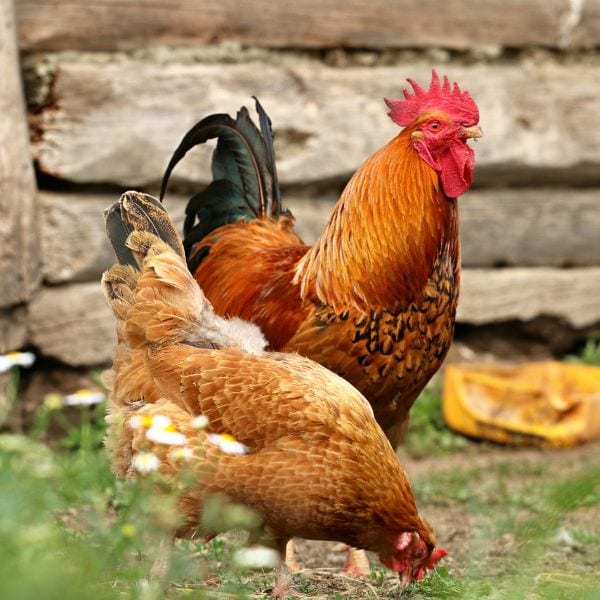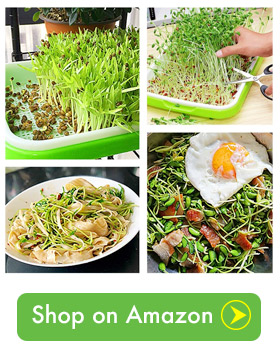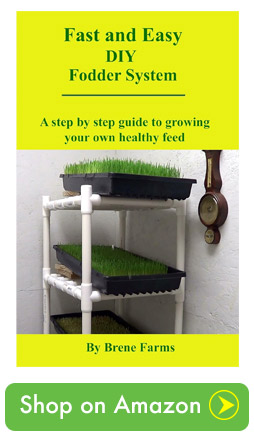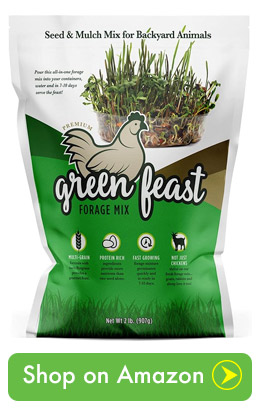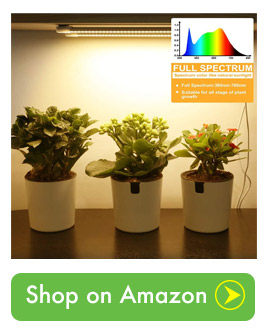Growing Fodder for Your Chicken Flock: A Comprehensive Guide
Growing fodder for chickens is an ideal way to provide your flock with a healthy, cost-effective source of nutrition, especially during the winter months when natural forage is scarce. If you’re interested in learning how to grow fodder for chickens, this comprehensive guide will give you all the information you need to get started. From the best plant care guides to grow fodder and gardening product reviews, you’ll find tips on everything you need to support your chicken raising endeavors.
First and foremost, it’s essential to understand what exactly chicken fodder is. Essentially, fodder systems are designed to grow plants, such as grains and legumes, to a certain stage where they provide optimal nutrition for chickens. Think of it like the fancy sprouts you often see on the menu at an upscale restaurant, but only for chickens instead. Just like fresh sprouts, fodder is packed with nutrition and plant protein. This is typically achieved by allowing the plants to reach a height of 6-8 inches. At this stage, not only is the plant’s nutritional content at its peak, but the roots have also begun to intertwine, creating a type of mat that can easily be fed to your chickens. (Yes! they will eat the roots too!)
What You Need:
To start growing chicken fodder, there are a few necessary supplies you’ll need. This includes an appropriate container for growing your plants, a high-quality growing medium, and of course, the seeds themselves. Many successful meat feed growers use a simple plastic tray or even repurposed gutters, while others opt for more specialized systems specifically designed for fodder growing. The key here is to find a solution that works best for your unique needs and space. Fodder can be fed to both laying hens and meat chickens, making it a versatile food source for backyard flocks and larger farms alike.
When it comes to selecting seeds, there is no shortage of options. Some popular choices for growing fodder for your flock include barley, wheat, and sunflower seeds. Some of these seeds, such as barley, have been shown to significantly increase egg production in laying hens, making them a particularly popular option among chicken raisers.
Once you have all of your supplies, it’s time to start growing! To ensure a successful harvest, be sure to remain vigilant in caring for your plants and providing them with the proper environment to grow. While specific care guidelines may vary depending on the variety of plant you’re growing, there are some general tips and tricks to follow that can benefit almost any fodder system.
First and foremost, make sure to maintain an appropriate level of moisture to enable proper germination and growth. You’ll also want to make sure there’s adequate airflow and circulation, as stagnant air can lead to mold and other undesirable growths on your fodder. A small amount of hydrogen peroxide and help you prevent this. Lastly, consider implementing a natural light source or grow lights, particularly during the winter months when sunlight may be limited. This will help to optimize plant growth and keep your chickens happy and healthy.
Throughout your growing journey, it’s a good idea to stay up-to-date with the latest tips, tricks, and advice from fellow chicken enthusiasts. There are plenty of resources available to support your chicken raising efforts, including flock files, forum reply links, magazine previews, and free newsletters. Additionally, free guides like this one and members’ only magazines can offer even more valuable information and inspiration.
Growing fodder for chickens can be an immensely fun, rewarding, and beneficial endeavor for both you and your flock. With the right combination of proper plant care, a conducive environment, and commitment to learning and adapting, you can successfully grow chicken fodder and provide your chickens with the nutrition they need to thrive.
So dive into the world of fodder systems, and your chickens will surely thank you for it. And don’t forget to share your success with others by contributing to and participating in community discussions online – your knowledge and experience just might inspire someone else to start their own chicken raising journey. Now let’s continue on your journey by learning a little more about fodder growing systems.
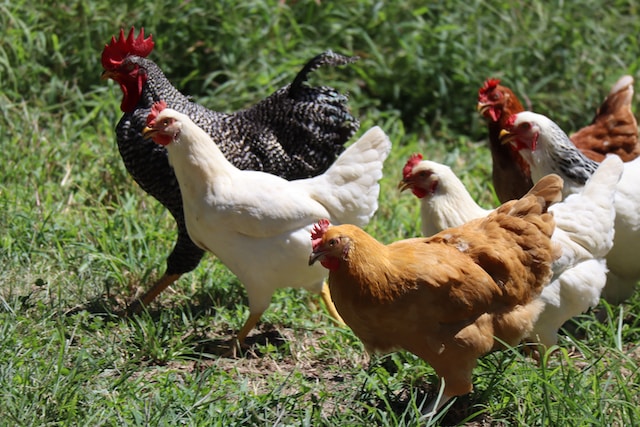
Photo by Zachariah Smith on Unsplash
From Seed to Greens: How to Grow Fodder for Your Chickens
If you’re a chicken lover, you know that providing your flock with fresh, nutritious greens is important for their health and well-being through the cold winter months. That’s why growing fodder is such a great idea for chicken keepers. With just a little effort and some simple supplies, you can grow a constant supply of fresh protein-rich greens for your chickens to enjoy.
In the rest of this article, we’ll share the best plant care guides to grow fodder effectively, feeding tips, and a few gardening product reviews to help you grow the perfect fodder for your chickens. Thanks to these guides, your chickens will love their fodder and you’ll see the benefits in their body weight and egg production.
So, how do you grow fodder for your chickens?
The first step is to choose the right seed. Some popular options include wheat, barley, and oats. You can experiment with different varieties to see which ones your chickens enjoy the most. Wheat, for example, is an excellent choice because it’s packed with nutrients and easy to grow. Oats and barley are also good options, but they may take a bit longer to sprout and mature. Thanks to the variety of seeds available, you can find something that will work well for your flock and your growing conditions.
Once you have your seeds, you’ll need to gather your supplies. You’ll need seed trays or containers, a watering system, and a good-quality potting mix. Be sure to choose a mix that’s designed for growing fodder, as it will provide the right balance of nutrients for your plants. You can find seed trays and other growing supplies at your local garden center or online. Some of the best plant care guides and product reviews can help you find the right supplies for your fodder-growing needs.
Now that you have your supplies and seeds, it’s time to start growing fodder for your chickens. First, soak your seeds in water for 8 to 12 hours. This helps them to germinate more quickly, and makes sure they’re clean and ready to grow. Once your seeds have soaked, spread them out in your seed trays or containers. You’ll want to cover the bottom of the tray with about ½ inch of seeds. This ensures that your fodder will grow thick and provide plenty of greens for your chickens.
Next, cover the seeds with a paper towel, and then water them well. Keep the trays in a warm, sunny spot, and continue to water them daily. You can remove the paper towel around day 2-3, but be sure to water every few hours so they don’t dry out. You can automate this process easily with a small pond pump and a plug-in appliance timer.
In just a few days, you should see your seeds start to sprout and grow. Wheat, barley, and oats will all grow at different rates, so keep an eye on your trays to ensure that the fodder is growing properly. Within a week or so, your fodder should be ready to feed to your chickens.
Don’t let them grow too tall, or your more picky eaters will ignore the fodder. Simply harvest the greens, and then spread them out for your chickens to enjoy. You can continue to grow fodder in this way, rotating your trays so that you always have fresh greens available for your flock.
Growing fodder for your chickens is an excellent way to provide them with fresh, nutrient-dense greens that will improve their overall health and well-being. Plus, it stores for at least a month in the freezer! You can easily grow fodder for your chickens once a month and ensure that they have access to these beneficial greens at all times. With a little planning, effort, and the right supplies, you can provide your flock with a constant supply of fodder and enjoy the benefits of healthy, happy chickens.
Benefits of Growing Fodder for Chickens: Why You Should Consider This System
As a chicken lover, you’ve probably been looking for ways to provide the best possible nutrition for your flock. Nutrient deficiencies cause all sorts of problems from fighting to egg eating. Growing fodder for your chickens is a game-changing system that could be your ideal solution for a whole host of issues with your flock. In this part of our comprehensive series about growing fodder for chickens, we’ll dive deeper into the benefits of this amazing system and why it’s worth considering for your backyard flock.
Fodder Systems Versus Pasture
First and foremost, the roots and greens provided by growing your own fodder can be an excellent addition to your chickens’ diet. You might be wondering why it’s necessary to grow fodder if your chickens already have access to the outdoors. Well, the reality is, foraging might not provide enough greens and nutrients for their diet, especially during the colder months when fields are barren and insects are in hibernation. Growing a constant supply of greens can be very beneficial for your chickens.
In addition, growing fodder for your chickens is an incredibly cost-effective system. Since you’ll be in part producing your own food, there is no unnecessary waste or turned over bowls to fill back up. This can help you save a significant amount of money, especially if you have a large flock.
Plus, growing fodder is simple and straightforward, requiring minimal investment in terms of gardening products and little time spent tending to your plants each day. With automation, you can literally spend less than 10 minutes per day managing this system!
Another significant benefit of this system is that it can improve the overall health of your chickens. The fresh roots and greens provided by fodder are a fantastic source of vitamins, minerals, and micronutrients. These nutrients help promote strong immune systems, overall better health, and even improved egg production. Furthermore, the natural and chemical-free growing process means you can be sure you’re giving your chickens the healthiest food option possible.
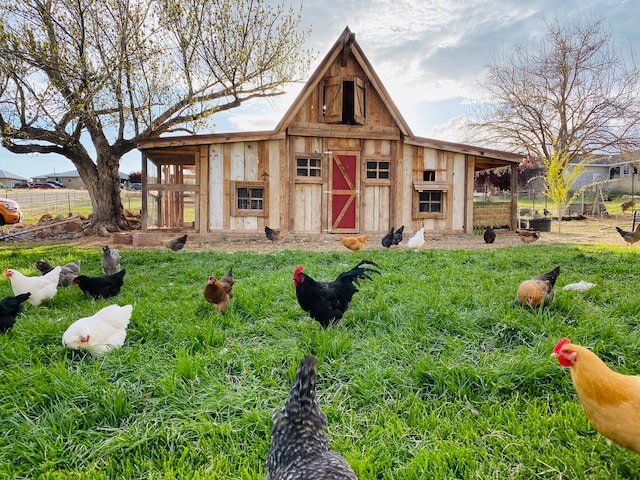
Photo by Dani Millington on Unsplash
Encouraging natural behaviors is another reason to consider this system. Chickens are natural foragers, and they love digging through roots and dirt, looking for bugs. By growing fodder, you’re creating a mini ecosystem for them to explore and engage with, which can help keep them active and entertained.
This stimulation is an important part of their well-being, and it helps prevent issues such as pecking and boredom, which in turn can lead to aggression. Thanks to this system, your chickens can have a constantly changing environment to explore and truly enjoy. They’ll work to break apart the roots and shoots, joyfully enjoying a nutritious meal each time you deliver fresh fodder to the chicken coop.
Good For The Environment
Moreover, growing fodder provides an environmentally friendly system that reduces waste and lessens your reliance on store-bought feeds. When you grow fodder, the water used for irrigating the plants is absorbed by the plants’ roots and then consumed by the chickens. This means that there’s no runoff to cause puddles and muck in your yard.
The reduced water wastage is excellent for both your wallet and the environment. Even if you don’t go entirely off-grid by relying solely on fodder, the reduction in packaging waste and transport emissions from the shop-bought products you replace will still add up. The volume of food can easily reach 3-4 times that of the dry seeds used in the process, stretching your dollars and making raising chickens more cost effective.
There are many reasons to consider growing fodder for your chickens:
It’s a cost-effective, nutritious system that promotes a healthy and stimulating lifestyle for your flock. There are numerous benefits to be gained by incorporating this fantastic system into your backyard, and we hope that this article and the previous ones have provided enough valuable information for you to make an informed decision.
If you’re ready to take the plunge and start growing fodder, be sure to check out our other articles featuring the best plant care guides, tips, and gardening product reviews for chicken lovers like yourself. For everyone else, let’s keep going with an overview of some different methods you can use to grow your own chicken feed.
Different Grow Fodder Methods: Which System is Best for Your Flock?
As we’ve already seen, growing fodder for chickens is an excellent way to ensure a healthy and nutritious diet for your flock. But there’s no one-size-fits-all approach to this. There are many different grow fodder methods available, so you can choose the one that works best for your chicken’s needs. Next up, we’ll cover some of the most popular grow fodder systems for chicken and help you decide which one is right for your chickens.
Use Your Existing Hydroponic Systems
One common method of growing fodder for chickens is using a hydroponic system. Hydroponic fodder systems don’t require soil, so they are ideal for chicken owners who don’t have a lot of space or the proper soil conditions for traditional gardening. The fodder is grown in trays with water and nutrients, allowing it to sprout and grow quickly. Hydroponic systems are great for chickens because they provide fresh, green fodder that’s full of essential nutrients. Plus, they’re relatively low-maintenance and can produce fodder year-round.
Another popular grow fodder system is the sprouted grain method. This involves soaking grains like wheat, barley, or oats in water, then allowing them to sprout just slightly before feeding them to your chickens. The process takes between 5-7 days, and the result is highly nutritious sprouted grains that your chickens will love. Sprouted grain fodder is beneficial to chickens because it’s easier for them to digest and is packed with essential vitamins and minerals. This system can be as simple as two 5 gallon buckets, where one has small holes drilled in the bottom to allow drainage and the other acts to keep the water in the system. Here’s how that works:
For chicken owners with a little more space to work with, traditional gardening is another option for growing fodder. Planting fodder crops like clover, alfalfa, and ryegrass directly in the ground can provide an ample supply of greens for your chickens. When it’s time to harvest, you can either cut and bring the fresh greens to your chickens or allow them to free-range and enjoy the tasty plants.
Rotate them through different pasture areas and allow time for the plants to come in before you let your chickens loose in a new area. This method is commonly referred to as mob grazing. The mob grazing method of growing fodder for chicken offers the added benefit of improving soil quality and promoting healthier ecosystems in your garden.
One more easy system to grow fodder you should consider is the use of fodder trees. These are fast-growing trees that can be easily pruned and used as fodder for livestock, including chickens. Popular fodder tree species include mulberry, willow, and black locust. The trees can be planted around the chicken coop, providing not only nutrition but also shade and shelter for your chickens. The leaves and young branches can be cut and fed to the chickens either fresh or dried, offering another sustainable fodder option.
Now that we’ve discussed some of the most popular grow fodder methods, you may be wondering which system is best for your flock. There’s no one-size-fits-all answer, as each method has its benefits and drawbacks. The best system for your chickens will depend on factors like your available space, climate, and personal preferences. You may even choose to implement multiple grow fodder systems to provide a diverse diet for your chickens and ensure a constant supply of fresh, nutritious greens.
Remember, a healthy and diverse diet is essential to your chicken’s overall well-being. By growing fodder for your chickens, you can ensure they’re getting the vitamins, minerals, and nutrients they need to thrive. No matter which grow fodder system you choose, your chickens are sure to thank you with delicious eggs and happy clucks!
Growing Fodder Tips, Tricks, and Chicken Care Guides
Growing your own fodder for chickens has become increasingly popular among backyard chicken enthusiasts for a number of reasons. Not only does it allow you to have greater control over the quality of the food you’re feeding your flock, but it can also save you a significant amount of money in the long run.
Plus, sprouted grains are a nutritional powerhouse for your chickens, making this an excellent option for raising healthier, happier birds. Let’s explore some more tips, tricks, and care guides to help you get started on your journey to growing your own chicken fodder.
When it comes to growing fodder, there are a few essential grains you’ll want to focus on. Traditionally, barley, wheat, and oats are the most popular choices to grow fodder sprouts due to their high nutritional value and relatively quick germination time. These grains, when sprouted, produce a dense mat of nutritious greens that your chickens will love to pick apart. To get started, you’ll need to soak the grains in water for 24 hours, allowing them to absorb plenty of moisture and begin the germination process.
After soaking, you’ll want to spread the grains evenly in a grow tray, ensuring they’re not too densely packed together. This will allow air to circulate and help prevent the growth of mold or mildew. The trays should be placed in a warm environment, ideally around 65-75°F, to encourage growth. It’s essential to ensure that the grains remain moist at all times by watering them 3-5 times daily. Depending on the grain type and growing conditions, it should take around 7-10 days for the fodder to be ready for your chickens.
There are several different grow fodder methods you can employ, from simple manual systems to more automated, hydroponic setups. The best system for your flock will depend on the time, space, and budget you have available for this project. For those starting, a straightforward manual system using trays or containers on shelves will suffice. However, if you have the resources and are looking to grow large amounts of fodder, investing in a more automated system like the one in the video below may be worth considering.
Preventing Digestive Issues
Fodder should be introduced gradually into your chickens’ diet to prevent digestive issues. Start by giving them a small amount each day, gradually increasing the portion size over time. This will allow their bodies to adjust to the new food source. Always ensure access to fresh water, grit, oyster shells, and a variety of other foods to keep the diet balanced and maintain healthy egg production.
One of the many benefits of growing fodder for chickens is that it can save you money on feed costs. By producing a consistent supply of fresh, nutritious greens, you can reduce your dependence on store-bought chicken feed. Additionally, chickens fed on sprouted grains tend to have better overall health, leading to higher egg production and improved egg quality.
Growing fodder for chickens as a supplement to their diverse diet has a variety of benefits, from better nutrition to cost savings on feed. But you need to provide more than just fodder and ideally, allow access to fresh pastures each day. With a few simple tips, tricks, and a proper chicken care guide, you can easily start growing your own sprouted grains for your flock. Whether you use a manual system or invest in a more automated setup, your chickens will thank you!
Check out this next video for a more complete overview of larger production systems:
Recommended Gardening Products for Growing Fodder and Raising Happy Chickens
If you’re looking to grow fodder for your flock on a daily basis, it’s important to invest in the right gardening products. There are many options available on the market, but these tried and tested products will make growing fodder and raising happy chickens a breeze. Here, we list the top products and kits to help you grow fodder for your chickens, ducks, and other poultry, ensuring they are fed a healthy and nutritious diet.
First and foremost, you’ll need high-quality grain seeds for sprouting. Seeds are the starting point for all fodder growth and are essential for producing nutrient-rich grass that your flock will love. Choose from a variety of seeds, such as barley, wheat, and corn, to find the perfect grain for your chickens. Make sure to pick seeds that are free from chemicals and pesticides to ensure the healthiest possible grass.
Next, invest in sturdy trays that can withstand daily wear and tear. You’ll need multiple trays to grow fodder on a rotating basis – ideally, at least one tray per day to cover a full week of production. Trays come in various sizes and materials, such as plastic, metal, or ceramic.
Plastic trays are lightweight, making them easy to move around, while metal trays are often more durable and can withstand more weight. Ceramic trays are a more eco-friendly option, but they might break more easily. Whatever tray type you choose, be sure it has proper drainage so your seeds don’t sit in water and rot, preventing proper growth.
When it comes to growing fodder, maintaining the right temperature and humidity is essential for achieving optimal growth. Investing in a good thermometer and hygrometer will not only help you monitor the conditions within the growing area but also make necessary adjustments as needed. Keep in mind that the ideal temperature range for growing fodder is between 65°F and 75°F, while the ideal humidity should be maintained at about 70%.
Proper watering is another crucial step in the fodder growth process. Investing in a quality watering can or spray bottle will ensure that you’re providing your seeds with the right amount of water on a daily basis. Opt for a spray bottle with an adjustable nozzle that allows you to switch between a mist setting for germinating seeds and a direct stream setting for more advanced growth stages. To prevent mold or mildew, you may want to mix a small amount of hydrogen peroxide in the water and drop the temperatures lower at night.
Adequate Lighting
Lighting is another important factor in growing fodder. While natural sunlight is ideal, it may not be possible for all setups. In these cases, investing in a good quality grow light is key. Look for a full-spectrum light that mimics sunlight and promotes healthy grass growth. Be sure to position the light at the right distance from the trays to avoid burning the grass.
To make daily cleaning and maintenance easier, consider investing in a draining pan for your trays. These pans collect excess water, making it easy to keep the area clean and dry. Simply empty the pan when it becomes full and return it to its place under the trays.
Lastly, choosing a reputable grow fodder kit can save you time and effort. These kits typically include everything you need to get started, such as seeds, trays, and instructions. However, it’s important to make sure the kit you choose is compatible with your specific needs and accommodates your desired number of trays.
In conclusion, investing in the right gardening products will make the process of growing fodder for your flock much more manageable and enjoyable. By following these recommendations, you’ll ensure the health and happiness of your chickens, ducks, and other poultry by providing them with fresh, nutritious, homegrown grass. Did you have success growing your own chicken fodder? We’d love to hear about it in the comments below!

